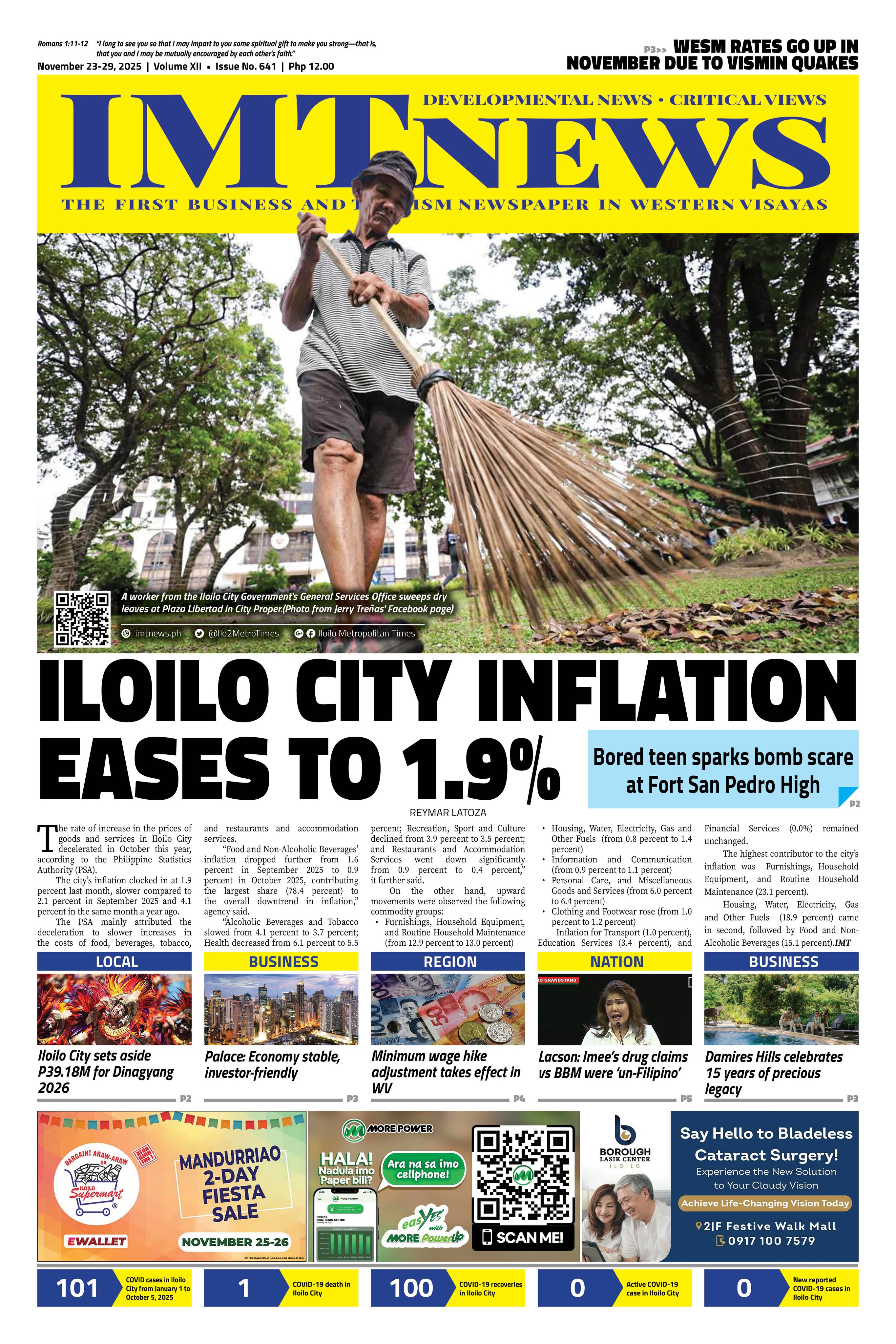Two months ago, the University of the Philippines Visayas released a slim, yet powerful publication titled Food Safety Para sa Komunidad. It is a timely manual, deeply relevant to Iloilo City, a place designated as a UNESCO Creative City of Gastronomy. This designation was more than ceremonial; it was a challenge to strengthen our culinary culture not just through celebration but also through responsibility. That is why this manual matters. It offers clear, research-based guidelines on food safety, written not for academics or bureaucrats but for the people who keep our food culture alive every day: street vendors, carinderia owners, kitchen staff, and small food business operators.
Food safety should not be treated as a niche academic topic, discussed only in classrooms, buried in research papers, or presented at professional conferences. It is a fundamental right, especially for the people who cook, sell, and eat food every day.
But what happens to a good idea when it fails to reach the people it was meant for?
This is not just a question. It is a warning. The manual, while complete and ready, currently faces logistical hurdles in printing and distribution. Without immediate action, its potential will be stifled. And that would be a serious loss, not just for the project team, but for Iloilo’s broader food ecosystem and the public health of our communities.
I encountered the manual almost by chance. I was visiting the desk of my co-teacher, Ma’am Gerth, well known in Western Visayas as both an educator and a news anchor when I found a copy. I borrowed it without hesitation and finished reading it that same afternoon. What drew me in was not just the subject matter, but the language. Two of the translators, Prof. Eliod Dimzon and Dr. Alice Tan Gonzales, are Hiligaynon writers I deeply admire. Their version of the manual in Hiligaynon is one of the most accessible and community-sensitive translations I’ve come across. They did not use highfalutin or overly formal Hiligaynon. They used the language that people actually speak, the language of markets, kitchens, and homes. That choice alone makes this manual an important cultural text.
What also struck me was the structure. The manual was designed with intention and care by a team led by Dr. Johannes M. Magpusao, Dean of the School of Technology. It is clear, relevant, and well-organized. It was created for real people doing real work in the food service industry. Its practical sections are supported by striking illustrations from Mr. Kristoffer T. Panes, whose visuals make the material more engaging and far easier to grasp. These drawings are more than decorative; they carry instructional weight. They speak to cooks, helpers, and vendors in ways text alone cannot.
The value of this publication lies not only in what it teaches but also in how it teaches. It embodies the belief that community education must begin in the language of the people and reflect their lived realities. In a city like Iloilo, proudly designated as a UNESCO Creative City of Gastronomy, recognition means little if the very people sustaining its food culture—vendors, carinderia owners, household cooks lack access to practical, understandable food safety education. Manuals and guides shouldn’t sit forgotten in university drawers. They should be in the hands of the community, written in their language, reflecting their lived experiences, and designed to be used.
And yet, despite its promise, the manual is not reaching its intended audience. Printing costs remain unresolved. Distribution plans are uncertain. While it would be ideal for local government units to support the effort financially, we cannot afford to wait for funding that may never arrive. The pace of bureaucratic support is slow, often glacial. Meanwhile, the need for food safety education is immediate and growing.
That is why we must think beyond traditional channels.
First, the manual’s existing Facebook page must be actively maintained and updated. Beyond English, the team should begin sharing Hiligaynon content regularly and actively coordinate with official LGU social media pages in Iloilo, Oton, Dumangas, and beyond. Consistency is key. With regular, local-language updates, the page can build a community of readers who will engage with and promote the manual organically.
Second, a dedicated website should be developed, one that allows the manual to be downloaded freely or read section by section. This move would make the resource accessible not only to those in Iloilo but also to a wider national audience hungry for usable, localized public health information.
Third, the manual should travel. Its potential as a national resource is real. By translating the content into other major regional languages such as Cebuano and Aklanon, the project can extend its reach to communities with similar food cultures and safety concerns. Partnering with LGUs in these regions can help fund this next wave of translation and localization.
Fourth, the physical format of the manual needs to be reconsidered. A4 is unwieldy for vendors and small-scale operators. A compact, pocket-sized edition would be far more useful, easy to carry, to share, and to use in kitchens, stalls, and markets.
If we fail to ensure that food safety knowledge reaches the public in ways that matter, we allow it to remain a privilege of the educated few, an issue of inequality masked by good intentions. That failure is not just logistical; it’s ethical.
Publications like this are not simply academic outputs. They are community assets. And when universities step beyond their gates and speak in the language of the people, they fulfill their highest purpose. They remind us that scholarship is not only about theory but about impact.
The University of the Philippines Visayas has already done the difficult work of creating something necessary and excellent. Now, it is up to all of us cultural workers, local officials, educators, and citizens to ensure it finds its audience. To let this manual remain confined to shelves and staff rooms would be more than a missed opportunity. It would be a failure to act in the interest of public good.
Let us not let that happen.
Noel Galon de Leon is a writer and educator at University of the Philippines Visayas, where he teaches in both the Division of Professional Education and U.P. High School in Iloilo. He serves as an Executive Council Member of the National Commission for Culture and the Arts-National Committee on Literary Arts.






